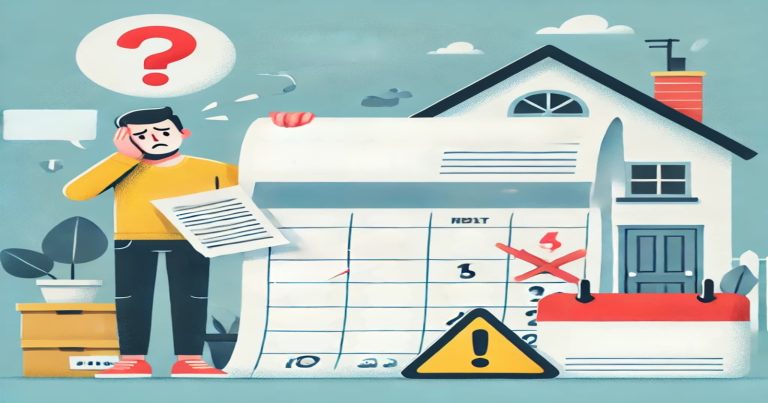The Outstanding Rent Journal Entry is used to record rent that is due but has not yet been paid by the end of the accounting period. It ensures that the expense is recognized in the correct period, maintaining the accuracy of financial statements. Rent Account (Dr.) Represents the expense incurred for using a property or space. Outstanding Rent Account (Cr.) means A liability showing that rent is still payable. This entry reflects that the business has utilized the premises (incurred the expense), but the payment remains due aligning with the accrual basis of accounting.
What is Outstanding Rent?
Outstanding rent means the rent that a business or person has used but not yet paid. It is the rent due but not paid at the end of a month or year. This amount becomes a liability for the business.
For example, if a shop pays rent on the 1st of every month, but by the 31st of March, the rent is still unpaid, then that unpaid amount is called outstanding rent. The business must still record this rent as an expense because the shop used the place. But since the rent has not yet been paid, it also becomes a payable item in the books.
What is the Journal Entry for Outstanding Rent?
Businesses use the accrual method of accounting, they record expenses when they happen, not when they pay them. One such example is an outstanding rent journal entry, where rent becomes due but is not paid yet. Rent becomes an expense for the business, and it also becomes a liability until paid. In this entry, we record rent as an expense and also show that the business still needs to pay it. Here’s how we pass the journal entry:
Journal Entry:
| Particulars | Debit (₹) | Credit (₹) |
| Rent A/c | XXXXX | |
| To Outstanding Rent A/c | XXXXX |
- Rent A/c increases because rent is an expense.
- Outstanding Rent A/c increases because it is a liability.
This is the standard journal entry of rent outstanding that is followed across businesses. This entry appears in the books at the end of every month or financial year if rent is due but not paid. The entry for rent due but not paid shows how rent remains an unpaid obligation. This kind of entry is also called rent payable journal entry, rent liability journal entry, or even rent accrued journal entry, depending on the business terms used.
Usage of Outstanding Rent Journal Entry
The Outstanding rent journal entry format is applicable when preparing final accounts, particularly for year-end adjusting entries.
- For instance, if rent has not been paid but is still due as per the trial balance, it must be recorded under liabilities using the outstanding rent journal entry. A suitable narration might be: (Being rent outstanding for March recorded in books) which indicates that the company is complying with proper accounting standards.
- It is essential to align expenses with the correct accounting period, even if they remain unpaid, as per the matching principle. This practice ensures that financial statements accurately reflect the company’s obligations and performance.
How to Record an Outstanding Rent Journal Entry in Accounts?
Once the concept of outstanding rent journal entry is understood, the next step is learning how to accurately record it in the accounting books. Proper recording is crucial for businesses to maintain accurate final accounts and prepare a correct balance sheet that reflects all liabilities. The journal entry for unpaid rent is recorded using the double-entry system, where every debit must have a corresponding credit. In this context, the business has incurred a rent expense, but the payment has not yet been made. Therefore, two things must be recognized:
- Rent Expense increases, because the cost of using the premises has occurred.
- Outstanding Rent increases, representing the amount that is still payable and thus becomes a liability.
Let’s take an example. Assume rent of ₹10,000 is due on 31st March but is not paid.
Journal Entry:
| Particulars | Debit (₹) | Credit (₹) |
| Rent A/c | 10,000 | |
| To Outstanding Rent A/c | 10,000 |
After recording this journal, the following effects take place:
- In the Profit and Loss Account, rent is recorded as ₹10,000 under expenses.
- In the Balance Sheet, ₹10,000 appears as a current liability under Outstanding Rent.
This entry ensures that the books reflect real business situations.
When rent remains unpaid for many months, you continue to add rent under the rent expense journal entry every month and carry forward the outstanding rent accounting entry. Make sure to update the total amount due. Let’s now look at how this impacts final accounts.
Rent in Final Accounts
Rent in Final Accounts is recorded to reflect the cost of using premises or property during an accounting period. It appears as an expense in the Profit and Loss Account, reducing the business’s net profit. If any rent is outstanding or prepaid, it is also shown on the Balance Sheet under liabilities or assets, respectively.
| Account | Statement | Effect |
| Rent A/c | Profit & Loss A/c | Recorded as Expense |
| Outstanding Rent A/c | Balance Sheet | Recorded as Liability |
The entry makes sure that the books match the matching principle in accounting. This is important in the case of audits and tax filing. Students must also remember that when the rent gets paid in the next month, the entry becomes:
Outstanding Rent A/c Dr.
To Cash/Bank A/c
The above entry reverses the earlier entry and reduces liability. Students often confuse this with prepaid rent, which is the opposite concept. If you pay rent in advance, it becomes an asset, not a liability. You must never mix rent-due journal entries and prepaid rent. One shows the money you owe. The other shows the money you have already paid.
Examples of Outstanding Rent Journal Entry
Understanding examples of Outstanding Rent Journal Entry helps students grasp how to apply accounting principles in real-life scenarios. These examples show how to record unpaid rent correctly using the double-entry system. Practicing such entries prepares students for exams and strengthens their foundation in financial accounting. Let’s look at 3 cases: monthly rent due, rent outstanding at year-end, and payment after the due date.
Case 1: Monthly Rent Due (Unpaid)
Monthly Rent Due refers to the rent amount that a business or individual is obligated to pay at the end of each month for the use of a property or premises. It becomes due when the rental period has ended, but the payment has not yet been made. In accounting, this situation is treated as an outstanding expense, and must be recorded even if no cash has been paid yet. This ensures that the rent expense is matched with the correct accounting period, following the accrual basis of accounting, and that the liability is reflected on the balance sheet under Outstanding Rent or Accrued Expenses.
Example1 : Suppose monthly rent is ₹8,000. Rent for March is unpaid on 31st March.
Journal Entry:
| Particulars | Debit (₹) | Credit (₹) |
| Rent A/c | 8,000 | |
| To Outstanding Rent A/c | 8,000 |
This is the basic monthly rent journal entry. Use it whenever monthly rent remains unpaid.
Case 2: Year-End Adjustment
Year-End Adjustment in accounting refers to the process of updating the financial records to reflect all expenses and incomes accurately for the financial year, even if some transactions have not yet been paid or received. This ensures the financial statements present a true and fair view of the company’s financial position.
With respect to Outstanding Rent, year-end adjustment becomes essential when the rent for the final month (or months) of the year has not been paid by the closing date. Although the payment hasn’t been made, the business has still used the premises and incurred the rent expense. Therefore, this unpaid rent must be recorded to match the expense with the correct accounting period.
Example 2: Rent from January to March (₹24,000 total) is unpaid at year-end.
Journal Entry:
| Particulars | Debit (₹) | Credit (₹) |
| Rent A/c | 24,000 | |
| To Outstanding Rent A/c | 24,000 |
This is also called rent accrued journal entry or accrued rent journal entry since rent has occurred but not paid. Use this entry in adjustment columns during the preparation of final accounts.
Case 3: Payment of Outstanding Rent
Payment of Outstanding Rent refers to the settlement of rent that was previously due but not yet paid, often recorded as a liability in the books under Outstanding Rent. Once the payment is made either in cash, cheque, or bank transfer it needs to be recorded correctly to update both the expense and liability accounts.
Example 3: In April, you pay March’s rent ₹8,000, which was due earlier.
Journal Entry:
| Particulars | Debit (₹) | Credit (₹) |
| Outstanding Rent A/c | 8,000 | |
| To Cash/Bank A/c | 8,000 |
This reduces liability and clears the rent payable. Always use this format after paying the rent.
Practice for Students
Students must solve these kinds of entries regularly. You must understand the format, the reason, and the result of each entry.
Tips for students:
- Always write narration after each entry.
- Don’t mix rent outstanding entry with rent paid.
- Use a journal entry of the outstanding rent in every adjustment-based problem.
- Understand the difference between outstanding rent and prepaid rent.
Relevance to ACCA Syllabus
Outstanding rent journal entry is a core part of accrual accounting and falls directly under the Financial Accounting (FA) and Financial Reporting (FR) papers of ACCA. ACCA students must know how to recognize expenses when they occur, even if not paid, as per the matching principle. This concept also connects to preparing accurate trial balances, balance sheets, and profit and loss accounts. Mastery of such adjustments is essential before learning consolidation, group accounts, and full IFRS compliance.
Outstanding Rent Journal Entry ACCA Questions
Q1: What type of account is “Outstanding Rent” in financial accounting?
A) Expense
B) Asset
C) Liability
D) Income
Ans: C) Liability
Q2: What is the correct journal entry for recording unpaid rent of ₹10,000?
A) Outstanding Rent A/c Dr. To Rent A/c
B) Rent A/c Dr. To Cash A/c
C) Rent A/c Dr. To Outstanding Rent A/c
D) Rent A/c Dr. To Bank A/c
Ans: C) Rent A/c Dr. To Outstanding Rent A/c
Q3: In which section of the balance sheet does “Outstanding Rent” appear?
A) Non-current Assets
B) Current Liabilities
C) Equity
D) Revenue
Ans: B) Current Liabilities
Q4: Which principle requires rent to be recorded even if it is not paid?
A) Cost Principle
B) Matching Principle
C) Revenue Recognition Principle
D) Conservatism Principle
Ans: B) Matching Principle
Q5: When outstanding rent is paid later, what entry is passed?
A) Rent A/c Dr. To Cash A/c
B) Cash A/c Dr. To Rent A/c
C) Outstanding Rent A/c Dr. To Cash A/c
D) Rent Expense A/c Dr. To Bank A/c
Ans: C) Outstanding Rent A/c Dr. To Cash A/c
Relevance to US CMA Syllabus
The US CMA syllabus emphasizes decision-making through cost and financial management. The accrual-based journal entries, like outstanding rent, form the foundation for preparing budgets, variances, and performance reports. Students need to understand rent adjustments to report correct financial performance and liabilities in line with US GAAP.
Outstanding Rent Journal Entry US CMA Questions
Q1: Under accrual accounting, when is rent recorded?
A) When rent is paid
B) When rent is invoiced
C) When rent is due
D) When rent is declared
Ans: C) When rent is due
Q2: What financial statement reports outstanding rent?
A) Cash Flow Statement
B) Income Statement
C) Statement of Retained Earnings
D) Balance Sheet
Ans: D) Balance Sheet
Q3: Which of the following reflects the correct effect of outstanding rent?
A) Increases assets and revenue
B) Increases liabilities and expenses
C) Decreases liabilities and expenses
D) Increases capital and assets
Ans: B) Increases liabilities and expenses
Q4: What type of adjustment is “outstanding rent”?
A) Accrued revenue
B) Deferred revenue
C) Accrued expense
D) Prepaid expense
Ans: C) Accrued expense
Q5: What accounting concept supports recording rent when incurred, not paid?
A) Realization Concept
B) Consistency Concept
C) Matching Concept
D) Going Concern
Ans: C) Matching Concept
Relevance to US CPA Syllabus
The US CPA syllabus, particularly in the FAR (Financial Accounting and Reporting) section, focuses on accrual accounting and how to report items like rent payable under US GAAP. Knowing how to pass entries like journal entries for rent outstanding in trial balance is vital for ensuring that financial statements show accurate liabilities and expenses, especially during audits or period-end reporting.
Outstanding Rent Journal Entry US CPA Questions
Q1: In the context of rent, what does “accrued expense” mean?
A) Rent paid before due
B) Rent due but not paid
C) Rent recorded and paid
D) Rent income not received
Ans: B) Rent due but not paid
Q2: What is the effect of recording outstanding rent on the accounting equation?
A) Assets ↑, Liabilities ↓
B) Liabilities ↑, Equity ↓
C) Assets ↑, Revenue ↑
D) Liabilities ↓, Expenses ↓
Ans: B) Liabilities ↑, Equity ↓
Q3: Under US GAAP, which principle supports recording outstanding rent?
A) Full Disclosure
B) Cost Principle
C) Matching Principle
D) Materiality
Ans: C) Matching Principle
Q4: Which account is credited when rent is outstanding?
A) Rent Expense
B) Bank
C) Rent Payable
D) Prepaid Rent
Ans: C) Rent Payable
Q5: How is rent outstanding reflected in year-end financials?
A) Operating income
B) Long-term liability
C) Current liability
D) Deferred tax asset
Ans: C) Current liability
Relevance to CFA Syllabus
In the CFA Level 1 syllabus, candidates study accruals and adjustments in Financial Reporting and Analysis (FRA). Understanding how accrued rent journal entries work helps candidates analyze financial statements, calculate ratios like current ratio or net income, and judge a firm’s financial health.
Outstanding Rent Journal Entry CFA Questions
Q1: What is the impact of outstanding rent on net income?
A) Increases net income
B) Decreases net income
C) Has no effect
D) Increases equity
Ans: B) Decreases net income
Q2: Where does the rent payable journal entry appear in financial statements?
A) Equity Section
B) Cash Flow Statement
C) Liabilities in the Balance Sheet
D) Assets in the Balance Sheet
Ans: C) Liabilities in the Balance Sheet
Q3: What is the accounting treatment for rent due but not paid?
A) Ignore until paid
B) Record as prepaid
C) Record as an accrued expense
D) Record as revenue
Ans: C) Record as an accrued expense
Q4: When rent is unpaid, how does it affect the current ratio?
A) Increases it
B) Decreases it
C) No change
D) Doubles it
Ans: B) Decreases it
Q5: Which financial statement shows the effect of rent expense?
A) Cash Flow Statement
B) Statement of Equity
C) Income Statement
D) Statement of Retained Earnings
Ans: C) Income Statement


